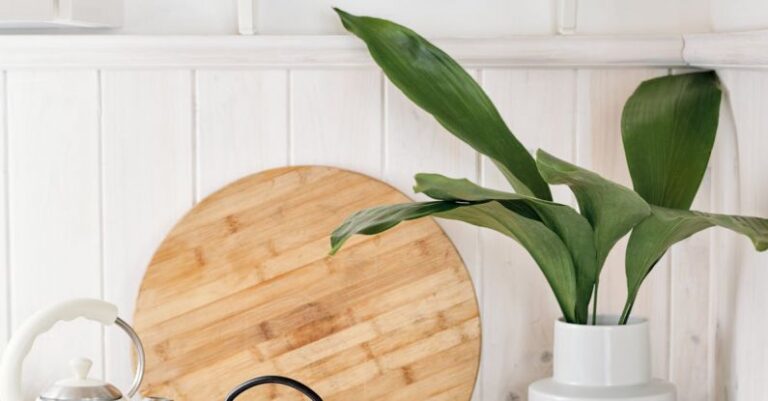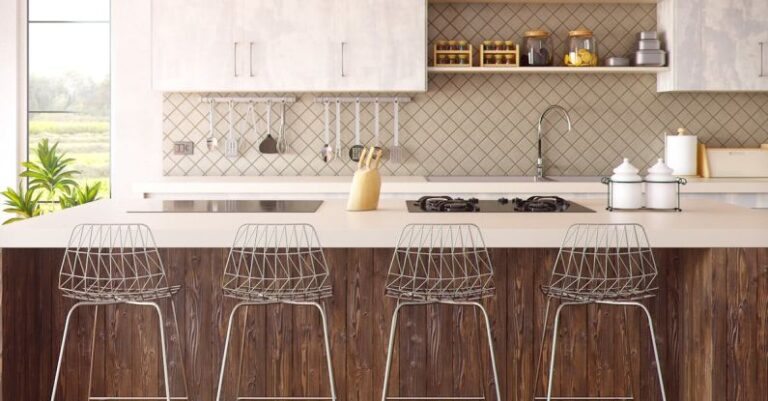
Mixing colors in the kitchen may seem like a simple task, but getting it right can make a significant impact on the overall aesthetic appeal of your cooking space. Whether you are choosing a color scheme for your kitchen decor or deciding on the hues for your kitchen accessories and appliances, it’s essential to understand the best practices for achieving a harmonious and visually appealing look. By following some key guidelines, you can create a kitchen that not only looks great but also enhances your cooking experience.
**Understanding Color Theory**
Before diving into mixing colors in your kitchen, it’s crucial to have a basic understanding of color theory. The color wheel is a useful tool that can help you identify complementary, analogous, or monochromatic color schemes. Complementary colors are opposite each other on the color wheel and create a vibrant contrast when used together. Analogous colors are next to each other on the wheel and provide a harmonious blend. Monochromatic schemes involve different shades of the same color and offer a subtle yet sophisticated look.
**Choosing a Dominant Color**
When selecting colors for your kitchen, it’s advisable to start with a dominant color that will set the tone for the space. This primary color can be used for larger elements such as cabinets, walls, or countertops. Opt for a color that you love and that reflects your personal style. Neutral tones like white, gray, or beige are versatile choices that can be paired with a variety of accent colors. If you prefer a bolder look, consider using a vibrant hue as your dominant color to make a statement.
**Adding Accent Colors**
Once you have chosen a dominant color for your kitchen, it’s time to introduce accent colors to create visual interest and depth. Accent colors can be used for smaller elements like backsplashes, kitchen gadgets, or decorative accessories. When mixing accent colors, refer to the color wheel to ensure that they complement rather than clash with the dominant color. For example, if your dominant color is blue, consider pairing it with accent colors like yellow or orange for a lively and energetic feel.
**Balancing Warm and Cool Tones**
Another key aspect of mixing colors in the kitchen is balancing warm and cool tones to create a harmonious atmosphere. Warm tones like red, orange, and yellow can add a cozy and inviting feel to the space, while cool tones like blue, green, and purple create a sense of calm and serenity. To achieve a balanced look, aim to mix warm and cool tones in equal measure throughout your kitchen. For instance, you can pair warm wood cabinets with cool marble countertops or incorporate a mix of warm and cool accessories to create visual contrast.
**Considering Natural Light**
Natural light can have a significant impact on how colors appear in your kitchen. When choosing colors for your kitchen, consider the amount of natural light the space receives throughout the day. Bright, sunny kitchens can handle bold and vibrant colors, while kitchens with limited natural light may benefit from lighter shades to create a sense of openness and airiness. Experiment with different colors under various lighting conditions to see how they interact and adjust your color scheme accordingly.
**Maintaining Cohesion**
While mixing colors in the kitchen, it’s essential to maintain cohesion to ensure a cohesive and unified look. Choose a color palette that flows seamlessly throughout the space, tying together different elements for a polished finish. Repeat colors in various parts of the kitchen to create a sense of continuity and balance. Avoid using too many conflicting colors that can create visual chaos and opt for a restrained color scheme that is visually appealing and easy on the eyes.
**Incorporating Texture and Pattern**
In addition to mixing colors, incorporating texture and pattern can add depth and dimension to your kitchen design. Consider adding textured finishes like stone, wood, or metal to create visual interest and tactile appeal. Use patterned tiles, fabrics, or wallpapers to introduce a playful element and break up solid color blocks. Mix and match textures and patterns thoughtfully to create a dynamic and visually engaging kitchen space.
**Crafting a Personalized Space**
Mixing colors in the kitchen is a creative process that allows you to personalize your cooking space and make it uniquely yours. Experiment with different color combinations, textures, and patterns to create a kitchen that reflects your personality and style. Don’t be afraid to take risks and inject your creativity into the design to make a statement. By following these best practices for mixing colors in the kitchen, you can transform your cooking space into a visually stunning and inviting environment that inspires and delights.





